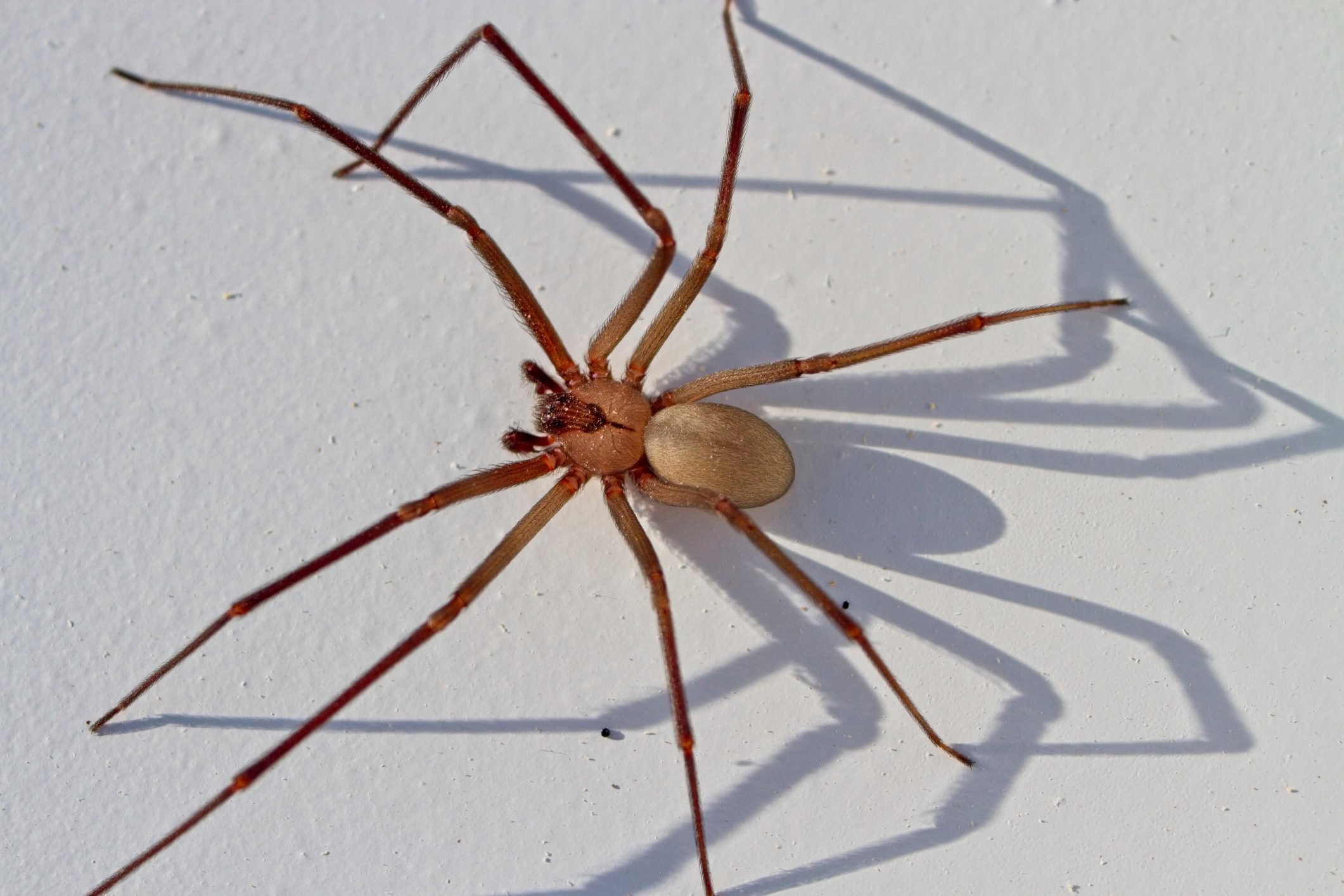The brown recluse spider seldom bites, and the bite won't kill you. Nevertheless, this is a pest you want to avoid.

Homeowner’s Guide to Brown Recluse Spiders

The Cleveland Clinic says three to 15 percent of the population suffers from arachnophobia, aka a fear of spiders. Thing is, only a few North American spiders are actually dangerous. One is the brown recluse. If you don’t like spiders, you really won’t like this one.
Fortunately, unless you live in the Midwest or the South, your chances of coming across one are slim. Jeremy Bradley, a training manager at Arrow Exterminators, cautions those who live in those areas to be on the lookout.
“Brown recluses can be found most anywhere outdoors as well as indoors,” Bradley says. “But special attention should be given to undisturbed areas in/around a building.”
On This Page
What Are Brown Recluse Spiders?
The brown recluse (Loxosceles reclusa) is a small house spider about the size of a quarter. It isn’t aggressive, so people who live in a house full of brown recluses may never be bitten. They will bite when provoked, however. That can happen if you sit on one, put on clothing or a shoe where one is hiding, or roll over on one in your bed.
There’s some material for arachnophobic nightmares.
Brown recluses don’t weave webs, preferring to stay in hiding and jump on prey when it appears. According to Bradley, their diet consists mostly of insects and arthropods, which means they eat other spiders. A brown recluse hunts like a wolf and subdues its prey with venom.
Do you know about spiders in your garden? You might not see them, but they’re all around you — and that’s a good thing. Your garden spiders, and learn how to entice more into your yard.
What Does a Brown Recluse Spider Look Like?
The body and legs are tan to brown. It’s about nine millimeters long (less than half an inch) with a dark violin-shaped pattern on its back, the narrow part of the pattern pointing to the abdomen. Because of this pattern, people sometimes call this spider the violin spider or “fiddleback.”
According to Bradley, many spiders have similar markings. You’ll need a magnifying glass to positively identify a brown recluse. Unlike most spiders, which have four pairs of eyes, the brown recluse has only three.
Where Do Brown Recluse Spiders Live?
They’re found in 16 states:
- Alabama;
- Arkansas;
- Georgia;
- Illinois;
- Indiana;
- Iowa;
- Kansas;
- Kentucky;
- Louisiana;
- Mississippi;
- Missouri;
- Nebraska;
- Ohio;
- Oklahoma;
- Tennessee;
- Texas.
There have been occasional sightings in other states, but that’s usually because a stray spider hitched a ride there in transport.
Other species of Loxosceles also inhabit the United States. The desert recluse, Loxosceles deserta, inhabits southern Arizona and California and into Mexico. The Apache recluse, Loxosceles apachea, can be found in southern Arizona and New Mexico.
Roughly 50 species of Loxosceles exist worldwide, all with the same venom. The University of California Integrated Pest Management Program advises all should be avoided.
Are Brown Recluse Spiders Deadly?
No. There’s never been a recorded case of a person dying of a brown recluse bite.
Most bites produce mild discomfort, but sometimes a bite can develop into a necrotic wound that takes months to heal. In rare cases, the bite can cause chills, fever or dizziness. This typically happens only to young children or the elderly with pre-existing health problems.
What Does a Brown Recluse Spider Bite Look Like?
The bite site swells and itches after three to eight hours, and the swelling may persist for as long as three weeks. Occasionally, the wound can develop a bluish necrotic lesion with a pale center, surrounded by reddish skin. The lesion can grow and expand for several months, leaving a deep scar.
How To Get Rid of a Brown Recluse Spider
Because brown recluses hide so well, they’re difficult to control. “Given their size, dexterity, and determination to survive, they can enter almost any building any time they want,” says Bradley.
Indoors, you might find them in undisturbed environments like storage areas, closets, cubbies, cabinets and under furniture. Outdoors, they hide in wooded lots, mature landscapes, wood and debris piles, and structures with wooden siding or roofing.
To keep spiders out of your home, don’t give them any reason to come in. To this end, Bradley offers these tips:
- Practice good housekeeping and lawn/landscape maintenance;
- Seal small openings, crevices and cracks around your home;
- Schedule routine pest control service with a local provider.




















